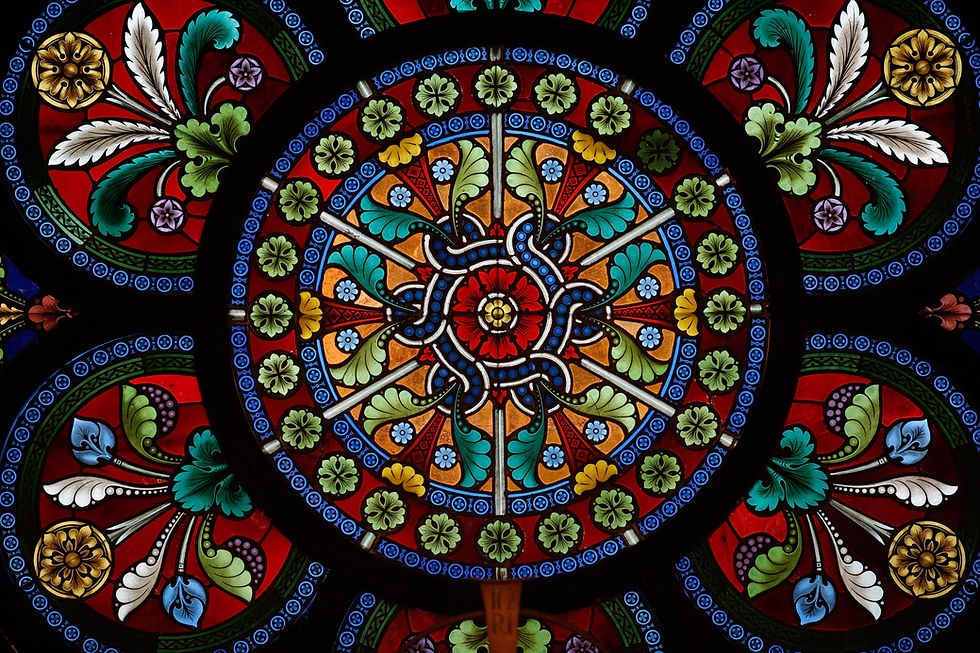The Healing Power of Creativity: What Research Tells Us
- rebeccakrug1017
- Oct 12
- 2 min read
Creativity isn’t just about making something beautiful — it’s about healing, self-expression, and finding meaning. More and more research is confirming what many of us already sense: engaging in art can reduce anxiety, ease depression, and increase overall well-being. When we make art, our brains and bodies respond — stress hormones decrease, dopamine (our “feel-good” chemical) increases, and we often experience a sense of calm and focus that mirrors mindfulness.
A growing number of studies show how powerful these effects can be. Reviews of art therapy programs have found improvements in emotional regulation, mood, and quality of life across both adults and youth. For example, recent research in Frontiers in Psychology (Lin et al., 2024) found that participating in active visual art therapy improved symptoms of stress, anxiety, and depression. Other studies have shown that creative arts programs for children and teens help lower anxiety and depressive symptoms, supporting self-esteem and emotional resilience (Zhao et al., 2024; Zhang et al., 2024).
🧠 How Art Changes the Brain
Neuroscience is helping us understand why creativity works so deeply on the human mind.- Dopamine & reward pathways: When people engage in art-making — even simple activities like coloring or collage — studies show increased blood flow to the brain’s reward centers, releasing dopamine and promoting positive feelings (Kaimal et al., 2017).- Emotion regulation networks: Art activates parts of the brain linked to emotion and self-awareness, such as the medial prefrontal cortex and amygdala, supporting emotional balance (Belfi et al., 2024).
- Nonverbal access: For people healing from trauma or navigating intense emotions, art provides a nonverbal way to process experiences that are difficult to express through words (Elbrecht & Antcliff, 2023).
💡 Integrating Creativity Into Therapy
Blending art with traditional approaches like CBT and mindfulness expands the ways clients can explore and heal. Through creative processes, clients can externalize what’s hard to say, play with new perspectives, and discover inner resources that words alone may not uncover.
In my own practice, I’m weaving these ideas together — combining therapeutic arts with evidence-based strategies to help clients express, release, and rebuild. The art process allows space for curiosity, self-compassion, and change in ways that are both grounded and deeply human.
Art reminds us that healing isn’t always linear or verbal — it can be layered, colorful, and full of unexpected insight.
-My best, Rebecca

References
Belfi, A. M., et al. (2024). Neural correlates of aesthetic and emotional experiences in art-making: A systematic review. Frontiers in Psychology. https://pmc.ncbi.nlm.nih.gov/articles/PMC11480958
Elbrecht, C., & Antcliff, C. (2023). Art therapy and trauma: A neurophysiological perspective. Journal of Trauma & Dissociation, 24(3), 215–234. https://pmc.ncbi.nlm.nih.gov/articles/PMC11073815
Kaimal, G., Ray, K., & Muniz, J. (2017). Reduction of cortisol levels and participants’ responses following art making. Art Therapy, 34(2), 74–80. https://www.sciencedaily.com/releases/2017/06/170613120531.htm
Lin, Y., et al. (2024). Active visual art therapy for adults: A systematic review and meta-analysis. Frontiers in Psychology. https://pmc.ncbi.nlm.nih.gov/articles/PMC11393726
Zhang, Q., et al. (2024). Art-based interventions for depression in children and adolescents: A meta-analysis of randomized controlled trials. Frontiers in Psychiatry. https://pmc.ncbi.nlm.nih.gov/articles/PMC12141542
Zhao, Y., et al. (2024). Effect of art therapy on anxiety in children and adolescents: A systematic review and meta-analysis. Frontiers in Psychology. https://pmc.ncbi.nlm.nih.gov/articles/PMC11260852




Comments